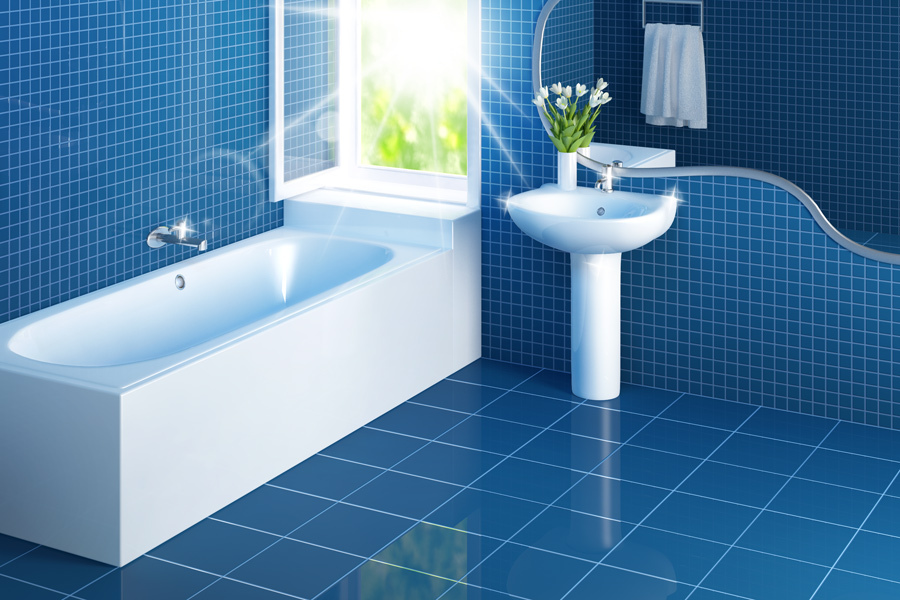 Keeping the bathroom clean is an ongoing project, but it’s one of the most worthwhile undertakings for any homeowner. There’s nothing like walking into a bathroom that’s spic-and-span in every respect; it’s like a sanctuary. Some people have the cleaning down to a science, with a regular cleaning schedule and a detailed checklist of tasks to complete. Others clean when they can, or do a few tasks at a time to keep things reasonably in order.
Keeping the bathroom clean is an ongoing project, but it’s one of the most worthwhile undertakings for any homeowner. There’s nothing like walking into a bathroom that’s spic-and-span in every respect; it’s like a sanctuary. Some people have the cleaning down to a science, with a regular cleaning schedule and a detailed checklist of tasks to complete. Others clean when they can, or do a few tasks at a time to keep things reasonably in order.
The tub and/or shower is actually one of the most important aspects of bathroom hygiene, since the constant presence of moisture can easily lead to mold and mildew. Knowing the difference between terms like “scum,” “mildew,” and mold isn’t always easy. For example, you might just have a little mildew on your tiles, or you might have a deeper mold invasion that’s only visible on the surface. Whatever the case, the problem may have been preventable with a better prevention strategy. Here are five ways to keep your shower and/or tub free of mold throughout the days and weeks.
1. Use a squeegee
Regularly eliminating the moisture on the walls of your tub or shower is probably the single most important way to keep mold out of the picture. A lot of people choose to do this once at the end of every day, after the last shower or bath has been taken. This means the moisture won’t sit there overnight – which makes it a lot more difficult for mold to grab a foothold. Others use a squeegee after every single use. This is even more effective, but of course, it’s a lot to ask for some households. Either way, incorporating regular squeegee use into your bathroom maintenance plan is a highly effective mold prevention technique.
2. Run the fan
This is one of the most overlooked – yet practical – measures you can take to reduce moisture in the bathroom, and to prevent mildew and mold. If you don’t have a ventilation fan installed in your bathroom, considering having one installed (it’s not the most expensive bathroom renovation project out there). Running the fan during your shower, and turning it off when you leave the bathroom, is a perfectly good option. Running it for twenty or thirty minutes after you shower is also a good idea. Even better, have an automatic timer installed so that you don’t have to worry about turning the fan off.
3. Seal those grout lines
This is something that you can do periodically (a lot of homeowners do it on an annual basis) in order to waterproof your tile surface and prevent moisture from actually penetrating the walls – because of moisture does get inside, the situation becomes a lot more favorable to mold.
Call a mold specialist with specific questions, or to address an existing problem
Obviously, prevention is the most desirable way to deal with mold – but in case there is a problem, experience mold specialists are on call to help you deal with the problem definitively, or simply to offer rock solid advice on preventing further mold invasions in the future.
